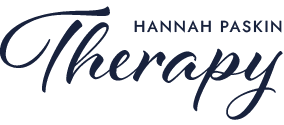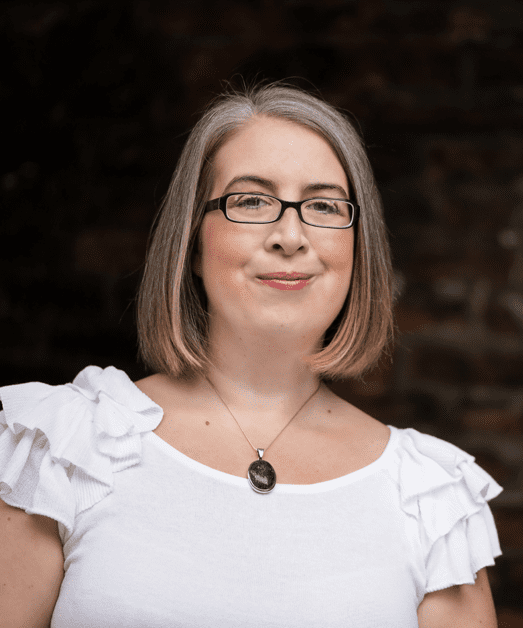Therapy for OCD
Experienced CBT Therapist & ERP Therapist
Therapy in Cheshire & Online Therapy

How CBT Helps with OCD
OCD constantly evolves. Just as you find a way to shut it down, it finds a new way to pull you back in – a new variation of an intrusive thought, a new behaviour it convinces you to do, a new topic completely it switches to. It’s a sneaky so and so, which is why working with an experienced therapist is so important.
Therapy for OCD will help you to:
- Understand intrusive thoughts
- Stop believing your intrusive thoughts
- Stop judging yourself for your thoughts
- Move away from superstition
- Delete your compulsions
- Deal with new future intrusive thoughts differently
- Stop adding in new compulsions
- Finally break free
Working with me
OCD can be relentless and exhausting. I’m here to ensure you get effective therapy. I’m here to push you to make changes so you’re no longer stuck in the OCD trap. I take a Straight-Talking approach to therapy, and very much emphasise the importance of knowledge and understanding so OCD doesn’t win again.
You can read lots of 5 ★ Reviews from clients on both Google and Trustpilot, including from OCD client’s I’ve worked with.


What is OCD?
Obsessive Compulsive Disorder (OCD) is a type of anxiety that can be incredibly debilitating. Most of those with OCD will have experienced it in some shape or form since early teens.
OCD starts with intrusive thoughts or images. Everyone experiences these on a huge range of topics – it’s a normal part of being a human. But those with OCD typically obsess over some of these thoughts or images – is it true, what does it mean, what if… This fear then leads to compulsions – avoiding ‘feared’ situations, engaging in superstitious rituals, checking behaviours, trying to push the thoughts away and more.
Understanding OCD
Believing false thoughts will often have started in younger years. Perhaps it was believing you’d forgotten something so you double checked your bag before school; or thinking you couldn’t trust your bladder and excessively going to the toilet; or a small superstition behaviour like saluting the magpie; or perhaps it started by confessing unnecessary things to your parent.
Over the years, it’s likely the focus of your worries has switched around between different types of OCD. Something you were really bothered about in the past is no longer a concern, but instead a new topic has come in to tempt you, and with it a new set of compulsions.
OCD in simple terms is believing our thoughts and acting as if they are true – even though they definitely are not. To break the OCD cycle, we have to undo this – stop believing our thoughts, stop acting as if they are true -this is the focus of Therapy for OCD.
Time to break free
Types of OCD
There are lots of types of OCD, and I’ve summarised below the ones I most often work with (although there is more, there’s too many to cover them all here).
Intrusive thoughts can be terrifying—like swerving into traffic, accidentally harming someone, jumping off a balcony, smothering a child or more. These thoughts feel distressing because they are completely the opposite to your true intentions and values.
Research tells us that everyone experiences intrusive thoughts. The key difference? Most people dismiss them, while those with OCD obsess over them, fearing what the thoughts might mean. This can lead to avoidance—steering clear of driving, sharp objects, balconies, or even caring for children.
This type of OCD has thoughts and images of sexual acts. A common one with this is thoughts of being a paedophile, or having raped someone you’ve had sex with, of being sexually attracted to someone inappropriate etc. The fear that they could be true often drives behaviours such as avoiding being near children, avoiding having sexual relationships, avoiding being near anyone that is minimally clothed (swimming, beaches etc). It can also cause an avoidance of watching certain film or TV content.
With fear of contamination, there’s often a feeling of being dirty oneself, or of certain items being dirty. There are unrealistic ideas of how germs can transfer and of how harmful they are. Hand washing is common in contamination fear OCD, as is using of anti-bacteria products, avoidance of bodily fluids, and of touching items others have touched. Hand washing or showering is often repeated excessively until a feeling of being clean is achieved. It’s also common to avoid touching items like bins, to avoid public toilets, excessively wash bedsheets, and have extra rituals for handling meat or diary food items.
This type of OCD is driven by the fear you didn’t do something, or that you did it incorrectly. Typical checking behaviours with this are doors, locks, plugs, electrical appliances etc. It can also come up as situations where you believe it’s possible that you’ve said or done something bad without realising it, resulting in trying to search back through your memory, checking of messages or emails, get reassurance from others.
Just like with contamination, there’s a repetition of a particular behaviour until a certain feeling is achieved – in this case something ‘feeling right’. Rituals and compulsions can vary greatly from person to person. Examples might include a very detailed order in which you have to do things in the morning or at night, the saying of prayers repeatedly, rewinding the actions done when an unwanted thought occurred, ordering options in a particular way, or a process of counting or touching items in a particular way. Behind these behaviours is typical superstitious beliefs, fears of jinx or curse, or of tempting fate for something bad to happen to loved ones.
This compulsion can result from a range of content of unwanted thoughts. It’s often believing that lots of thoughts we have are wrong, that certain thoughts are cheating or disloyal, that any negative thoughts about a loved one make us a bad person. In these situations, it’s common for those with OCD to confess these thoughts to others, to seek their view on if this makes them bad, to seek their forgiveness etc.
Intrusive thoughts can be terrifying—like swerving into traffic, accidentally harming someone, jumping off a balcony, smothering a child or more. These thoughts feel distressing because they are completely the opposite to your true intentions and values.
Research tells us that everyone experiences intrusive thoughts. The key difference? Most people dismiss them, while those with OCD obsess over them, fearing what the thoughts might mean. This can lead to avoidance—steering clear of driving, sharp objects, balconies, or even caring for children.
This type of OCD has thoughts and images of sexual acts. A common one with this is thoughts of being a paedophile, or having raped someone you’ve had sex with, of being sexually attracted to someone inappropriate etc. The fear that they could be true often drives behaviours such as avoiding being near children, avoiding having sexual relationships, avoiding being near anyone that is minimally clothed (swimming, beaches etc). It can also cause an avoidance of watching certain film or TV content.
With fear of contamination, there’s often a feeling of being dirty oneself, or of certain items being dirty. There are unrealistic ideas of how germs can transfer and of how harmful they are. Hand washing is common in contamination fear OCD, as is using of anti-bacteria products, avoidance of bodily fluids, and of touching items others have touched. Hand washing or showering is often repeated excessively until a feeling of being clean is achieved. It’s also common to avoid touching items like bins, to avoid public toilets, excessively wash bedsheets, and have extra rituals for handling meat or diary food items.
This type of OCD is driven by the fear you didn’t do something, or that you did it incorrectly. Typical checking behaviours with this are doors, locks, plugs, electrical appliances etc. It can also come up as situations where you believe it’s possible that you’ve said or done something bad without realising it, resulting in trying to search back through your memory, checking of messages or emails, get reassurance from others.
Just like with contamination, there’s a repetition of a particular behaviour until a certain feeling is achieved – in this case something ‘feeling right’. Rituals and compulsions can vary greatly from person to person. Examples might include a very detailed order in which you have to do things in the morning or at night, the saying of prayers repeatedly, rewinding the actions done when an unwanted thought occurred, ordering options in a particular way, or a process of counting or touching items in a particular way. Behind these behaviours is typical superstitious beliefs, fears of jinx or curse, or of tempting fate for something bad to happen to loved ones.
This compulsion can result from a range of content of unwanted thoughts. It’s often believing that lots of thoughts we have are wrong, that certain thoughts are cheating or disloyal, that any negative thoughts about a loved one make us a bad person. In these situations, it’s common for those with OCD to confess these thoughts to others, to seek their view on if this makes them bad, to seek their forgiveness etc.
OCD Treatment
Treatment for OCD is focused on breaking the stuck cycle. The cycle is maintained by believing our intrusive thoughts to be true/to have meaning and then acting as if these thoughts were true (when they are not). For some types of OCD, it is also maintained by the judgment we have of ourselves for the thoughts we are having. By feeding our fears, the problem grows. Therefore, treatment is about doing the opposite and showing our brain that these fears aren’t valid, that the thoughts are lies, and that we don’t need to do the compulsions anymore.
Obsessive-Compulsive Disorder is treatable. CBT for OCD is effective when delivered by an experienced therapist. All techniques I use in sessions have been researched and tested in trials to ensure you are provided with the most up to date and effective treatment for your symptoms.


ERP Therapist
Exposure and Response Prevention (ERP Therapy) is a type of therapy specifically designed for OCD. What this basically means is working on being able to be exposed to a triggering thought/image/situation, and prevent yourself from responding, thereby breaking the OCD cycle.
How I often think of ERP Therapy, is that it’s undoing the behaviours you’ve already developed because of the intrusive thoughts you’ve believed in the past. But actually, this is only one part of treatment, the other half is about preventing you believing new intrusive thoughts and developing new behaviours.
This is why I offer my clients a combination of ERP Therapy and Cognitive Therapy for OCD.
Therapy for OCD


Online OCD Therapist
I provide Online OCD Therapy for clients in the UK, across Europe, and internationally (except UAE, Canada and USA). Zoom Therapy allows us to work face-to-face virtually.
The advantages of working online include being able to keep recordings of the sessions, having digital images of diagrams/notes from sessions and more.
Choosing an Online Therapist allows you to find a therapist who is experienced in the problem you are experiencing, irrespective of geographic location.
Time to break free
Next steps
Discovery Call
We start with a free 15-minute discovery call to see if we’re the right fit.
Tailored Treatment Plan
I create a personalised CBT treatment strategy based on your challenges and goals.
Actionable Tools & Support
We work together to break unhelpful patterns and build resilience.
Long-term confidence
By the end, you’ll have a practical blueprint for managing your low self-esteem
Flexible Options: In-person therapy in Cheshire (Middlewich) & online therapy available.
Ready to Get Started?




